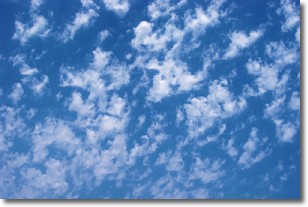Weather Alert in New Mexico
Fire Weather Watch issued May 13 at 4:27AM MDT until May 14 at 9:00PM MDT by NWS Albuquerque NM
AREAS AFFECTED: Northwest Plateau
DESCRIPTION: ...RED FLAG WARNING IN EFFECT TODAY FROM 11 AM TO 9 PM FOR THE NORTHWEST PLATEAU; WEST CENTRAL MOUNTAINS, BASIN, AND RANGE; MIDDLE RIO GRANDE VALLEY; AND THE SANDIA AND MANZANO MOUNTAINS DUE TO STRONG WIND AND LOW HUMIDITY... ...FIRE WEATHER WATCH IN EFFECT WEDNESDAY FROM 11 AM TO 9 PM FOR THE NORTHWEST PLATEAU; WEST CENTRAL MOUNTAINS, BASIN, AND RANGE; MIDDLE RIO GRANDE VALLEY; AND THE SANDIA AND MANZANO MOUNTAINS DUE TO STRONG WIND AND LOW HUMIDITY... .Strong winds and very low humidity are expected today and Wednesday as an upper level trough passing north of New Mexico steers the jetstream over the state. Updated forecasts indicate high fire danger will continue to spread, so the Red Flag Warning and Fire Weather Watch have been expanded to include the Northwest Plateau and all of the Sandia and Manzano Mountains. The most critical fire weather conditions are expected today, when winds will be the strongest and the high temperature will climb as much as much as 10 degrees above average. Wind speeds will weaken some on Wednesday and temperatures will fall up to 8 degrees compared to today, but strong instability will persist and there will only be a modest decrease in mixed layer depth on Wednesday. The National Weather Service in Albuquerque has issued a Red Flag Warning...which is in effect from 11 AM this morning to 9 PM MDT this evening. A Fire Weather Watch has also been issued. This Fire Weather Watch is in effect from Wednesday morning through Wednesday evening. * AREA AND TIMING...Northwest Plateau (Zone 101) today and Wednesday from 11 AM to 9 PM. * 20 FOOT WINDS...For today, southwest 20 to 30 mph with gusts up to 40 mph. For Wednesday, west 15 to 30 mph with gusts up to 40 mph. * RELATIVE HUMIDITY...For today, 9 to 12 percent. For Wednesday, 10 to 15 percent. * IMPACTS...Any fires that develop will likely spread rapidly. Outdoor burning is not recommended.
INSTRUCTION: Please advise the appropriate officials or fire crews in the field of this Red Flag Warning. Please advise the appropriate officials or fire crews in the field of this Fire Weather Watch.
Want more detail? Get the Complete 7 Day and Night Detailed Forecast!
Current U.S. National Radar--Current
The Current National Weather Radar is shown below with a UTC Time (subtract 5 hours from UTC to get Eastern Time).

National Weather Forecast--Current
The Current National Weather Forecast and National Weather Map are shown below.

National Weather Forecast for Tomorrow
Tomorrow National Weather Forecast and Tomorrow National Weather Map are show below.

North America Water Vapor (Moisture)
This map shows recent moisture content over North America. Bright and colored areas show high moisture (ie, clouds); brown indicates very little moisture present; black indicates no moisture.

Weather Topic: What is Evaporation?
Home - Education - Precipitation - Evaporation
 Next Topic: Fog
Next Topic: Fog
Evaporation is the process which returns water from the earth
back to the atmosphere, and is another crucial process in the water cycle.
Evaporation is the transformation of liquid into gas, and it happens because
molecules are excited by the application of energy and turn into vapor.
In order for water to evaporate it has to be on the surface of a body of water.
Next Topic: Fog
Weather Topic: What are Fractus Clouds?
Home - Education - Cloud Types - Fractus Clouds
 Next Topic: Freezing Rain
Next Topic: Freezing Rain
A fractus cloud (scud) is a fragmented, tattered cloud which has
likely been sheared off of another cloud. They are accessory clouds, meaning they
develop from parent clouds, and are named in a way which describes the original
cloud which contained them.
Fractus clouds which have originated from cumulus clouds are referred to as
cumulus fractus, while fractus clouds which have originated from stratus clouds
are referred to as stratus fractus. Under certain conditions a fractus cloud might
merge with another cloud, or develop into a cumulus cloud, but usually a
fractus cloud seen by itself will dissipate rapidly.
They are often observed on the leading and trailing edges of storm clouds,
and are a display of wind activity.
Next Topic: Freezing Rain
Current conditions powered by WeatherAPI.com




